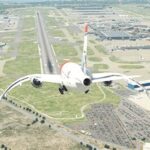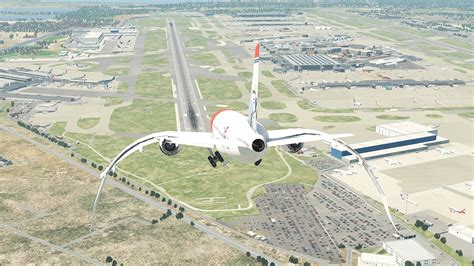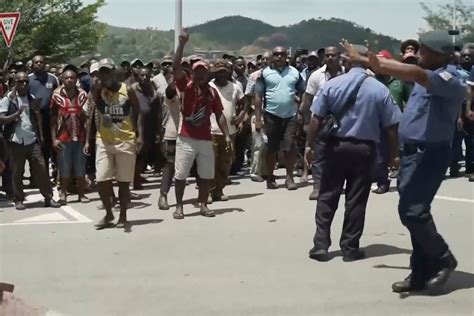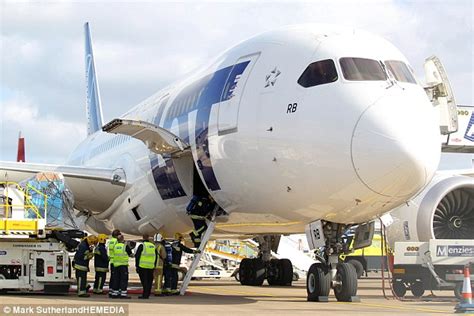
New conformal fuel tanks promise to significantly extend the operational range and combat air patrol endurance of the Rafale fighter jet, bolstering its capabilities for air dominance and long-range strike missions. The integration of these tanks, which hug the aircraft’s fuselage, represents a notable enhancement to the Rafale’s already impressive performance, offering a solution to increase fuel capacity without compromising aerodynamic efficiency.
The Rafale, a twin-engine, multirole fighter aircraft designed and manufactured by Dassault Aviation, has reemerged with these newly integrated conformal fuel tanks (CFTs), signaling a substantial upgrade to its capabilities. These CFTs are designed to increase the aircraft’s fuel capacity, thereby extending its range and endurance without requiring external drop tanks that can increase drag and reduce maneuverability. The CFTs are mounted on the upper surface of the fuselage, conforming to the aircraft’s shape to minimize aerodynamic impact. This upgrade is particularly crucial for long-range missions, such as air patrols, reconnaissance, and strike operations where extended time on station is essential.
According to Dassault Aviation, the integration of CFTs represents a significant leap in the Rafale’s operational flexibility. “The conformal fuel tanks offer a substantial increase in fuel capacity, allowing for longer missions and increased time on station without compromising the aircraft’s aerodynamic performance,” stated a company spokesperson. This enhancement addresses a key requirement for modern air combat, where the ability to project power over long distances is a critical advantage. The CFTs enable the Rafale to operate more effectively in contested environments, providing greater persistence and responsiveness.
The advantages of conformal fuel tanks over traditional external fuel tanks are manifold. External tanks, while effective in increasing fuel capacity, add significant drag to the aircraft, reducing its speed, maneuverability, and overall performance. CFTs, on the other hand, are designed to minimize drag by conforming to the aircraft’s shape. This allows the Rafale to maintain its high-speed performance and agility while carrying a significantly larger fuel load. The integration of CFTs also frees up hardpoints on the wings for additional weapons or sensors, further enhancing the Rafale’s mission capabilities.
The Rafale’s versatility is one of its key selling points, capable of performing a wide range of missions, including air superiority, ground attack, reconnaissance, and nuclear deterrence. The addition of CFTs enhances this versatility by allowing the Rafale to operate more effectively in diverse operational scenarios. For example, in air superiority missions, the extended range provided by CFTs allows the Rafale to patrol larger areas and respond more quickly to threats. In ground attack missions, the increased fuel capacity enables the Rafale to carry a heavier payload of bombs or missiles over longer distances. In reconnaissance missions, the extended endurance allows the Rafale to remain on station for longer periods, gathering critical intelligence.
The operational impact of the CFTs is particularly relevant in the context of modern air power. As global security challenges become increasingly complex, the ability to project air power over long distances is essential. The Rafale with CFTs offers a potent solution for countries seeking to enhance their air capabilities and maintain a credible deterrent force. The extended range and endurance provided by the CFTs allow the Rafale to operate more effectively in regions where airbases are limited or contested, providing a valuable asset for both offensive and defensive operations.
The integration of CFTs into the Rafale fighter jet is not merely a cosmetic upgrade; it’s a strategic enhancement that addresses the evolving demands of modern air warfare. By increasing fuel capacity without compromising aerodynamic performance, the CFTs amplify the Rafale’s capabilities across a spectrum of mission profiles. This upgrade solidifies the Rafale’s position as a leading multirole fighter, capable of meeting the complex challenges of contemporary air power.
In-Depth Analysis
The Rafale’s re-emergence with conformal fuel tanks (CFTs) represents a significant milestone in the evolution of this multirole fighter. The integration of CFTs addresses a crucial aspect of modern air combat: the need for extended range and endurance without sacrificing aerodynamic performance. This enhancement not only boosts the Rafale’s operational capabilities but also underscores its adaptability to evolving mission requirements.
Aerodynamic Efficiency and Performance:
One of the primary advantages of CFTs is their minimal impact on aerodynamic performance compared to traditional external fuel tanks. External tanks, commonly known as drop tanks, increase the aircraft’s fuel capacity but also add significant drag, which reduces speed, maneuverability, and overall efficiency. CFTs, in contrast, are designed to conform to the aircraft’s fuselage, minimizing drag and allowing the Rafale to maintain its high-speed performance and agility.
The aerodynamic design of CFTs is a critical factor in their effectiveness. By closely integrating with the aircraft’s existing contours, CFTs minimize the disruption of airflow, reducing drag and maintaining lift characteristics. This allows the Rafale to operate at its maximum potential, even with the added fuel capacity. The reduction in drag also translates to improved fuel efficiency, further extending the aircraft’s range and endurance.
Operational Flexibility:
The integration of CFTs significantly enhances the Rafale’s operational flexibility, enabling it to perform a wider range of missions more effectively. The extended range and endurance provided by CFTs are particularly valuable in long-range strike missions, air patrols, and reconnaissance operations. In these scenarios, the ability to remain on station for extended periods is crucial for mission success.
For example, in air superiority missions, the Rafale with CFTs can patrol larger areas and respond more quickly to emerging threats. The increased fuel capacity allows the aircraft to maintain a constant presence in the air, providing a deterrent against potential adversaries. In ground attack missions, the Rafale can carry a heavier payload of bombs or missiles over longer distances, increasing its effectiveness in striking targets deep within enemy territory.
In reconnaissance missions, the extended endurance provided by CFTs allows the Rafale to remain on station for longer periods, gathering critical intelligence. This is particularly important in situations where real-time intelligence is needed to make informed decisions. The Rafale can use its advanced sensors and reconnaissance equipment to gather data and transmit it back to command centers, providing valuable situational awareness.
Strategic Implications:
The integration of CFTs into the Rafale fighter jet has significant strategic implications for countries seeking to enhance their air power capabilities. The extended range and endurance provided by CFTs allow the Rafale to operate more effectively in regions where airbases are limited or contested. This is particularly relevant in the context of modern air warfare, where the ability to project power over long distances is essential.
The Rafale with CFTs offers a potent solution for countries seeking to maintain a credible deterrent force. The extended range and endurance allow the aircraft to operate in contested environments, providing a valuable asset for both offensive and defensive operations. The ability to project air power over long distances also enhances a country’s ability to respond to crises and protect its interests.
Comparison with Alternatives:
While external fuel tanks are a common solution for increasing an aircraft’s fuel capacity, they have several drawbacks compared to CFTs. External tanks increase drag, reduce maneuverability, and limit the number of hardpoints available for weapons or sensors. CFTs, on the other hand, minimize drag, maintain maneuverability, and free up hardpoints for additional mission equipment.
Another alternative is aerial refueling, which allows aircraft to extend their range and endurance by refueling in flight. However, aerial refueling requires specialized tanker aircraft and can be logistically complex and risky, especially in contested environments. CFTs provide a self-contained solution for increasing fuel capacity, eliminating the need for aerial refueling in many situations.
Technical Specifications and Design:
The conformal fuel tanks designed for the Rafale are meticulously engineered to integrate seamlessly with the aircraft’s existing structure. These tanks are mounted on the upper surface of the fuselage, conforming to the aircraft’s shape to minimize aerodynamic impact. The design incorporates advanced materials and manufacturing techniques to ensure structural integrity and durability.
The technical specifications of the CFTs include a significant increase in fuel capacity, typically several thousand liters, depending on the specific configuration. This additional fuel allows the Rafale to extend its range by hundreds of kilometers or increase its time on station by several hours. The CFTs are also designed to be easily installed and removed, allowing the aircraft to be reconfigured for different mission requirements.
Operational Benefits in Detail:
The operational benefits of the Rafale with CFTs are multifaceted and extend across various mission profiles. These benefits include:
- Increased Range: The primary benefit of CFTs is the significant increase in the Rafale’s operational range. This allows the aircraft to operate more effectively in long-range strike missions, air patrols, and reconnaissance operations.
- Extended Endurance: The increased fuel capacity also translates to extended endurance, allowing the Rafale to remain on station for longer periods. This is particularly valuable in situations where persistence is critical, such as air defense missions or intelligence gathering.
- Enhanced Payload Capacity: By freeing up hardpoints on the wings, CFTs allow the Rafale to carry a heavier payload of weapons or sensors. This increases the aircraft’s combat effectiveness and allows it to perform a wider range of missions.
- Improved Maneuverability: Unlike external fuel tanks, CFTs have minimal impact on the Rafale’s maneuverability. This allows the aircraft to maintain its high-speed performance and agility, even with the added fuel capacity.
- Reduced Reliance on Aerial Refueling: The extended range and endurance provided by CFTs reduce the Rafale’s reliance on aerial refueling. This simplifies logistics and reduces the risk associated with refueling in contested environments.
- Greater Mission Flexibility: The combination of increased range, extended endurance, enhanced payload capacity, and improved maneuverability makes the Rafale with CFTs a highly versatile platform capable of performing a wide range of missions.
Future Developments and Integration:
The integration of CFTs into the Rafale fighter jet is not a static development but rather an ongoing process of refinement and improvement. Future developments may include further optimization of the CFT design to minimize drag and maximize fuel capacity. There is also potential for integrating advanced sensors and communication systems into the CFTs, further enhancing the Rafale’s mission capabilities.
In addition to the CFTs, Dassault Aviation is continuously working on other upgrades to the Rafale, including improved radar systems, enhanced electronic warfare capabilities, and advanced weapons integration. These upgrades will further enhance the Rafale’s performance and ensure that it remains a leading multirole fighter for years to come.
Geopolitical Context:
The introduction of the Rafale with conformal fuel tanks occurs within a complex geopolitical landscape, where air power projection and strategic reach are critical for national security. Nations are increasingly investing in advanced fighter platforms capable of operating over vast distances and in contested environments. The Rafale, with its enhanced range and endurance, positions itself as a valuable asset for countries seeking to maintain a strong and credible air force.
The geopolitical significance of the Rafale with CFTs is evident in several regions around the world. In the Indo-Pacific, where maritime security and territorial disputes are ongoing concerns, the extended range of the Rafale enables it to patrol strategic sea lanes and project power across the region. In Europe, the Rafale provides a vital asset for NATO allies, enhancing their ability to respond to crises and deter potential adversaries. In the Middle East, the Rafale’s long-range strike capabilities make it a valuable tool for maintaining regional stability and combating terrorism.
Economic Impact:
The development and integration of CFTs into the Rafale fighter jet also have a significant economic impact. The project involves a wide range of companies and suppliers, creating jobs and stimulating economic growth. The Rafale program as a whole has generated billions of dollars in revenue for Dassault Aviation and its partners, supporting the aerospace industry in France and other countries.
Furthermore, the export sales of the Rafale contribute to the economic prosperity of France and enhance its position as a leading exporter of high-tech military equipment. The Rafale’s success in the international market has a positive impact on the French economy and strengthens its strategic partnerships with other countries.
Environmental Considerations:
While the focus is often on the military and strategic aspects, it’s important to consider the environmental implications of advanced fighter jets. The Rafale, like all aircraft, generates emissions that contribute to climate change. However, Dassault Aviation is committed to reducing the environmental impact of its products through the development of more fuel-efficient engines and the use of sustainable materials.
The use of CFTs can also contribute to environmental sustainability by reducing the need for aerial refueling, which requires additional aircraft and fuel consumption. By extending the Rafale’s range and endurance, CFTs can help to minimize the overall environmental footprint of air operations.
Conclusion:
The Rafale fighter jet with conformal fuel tanks represents a significant advancement in air power technology. The integration of CFTs enhances the Rafale’s operational capabilities, strategic reach, and economic impact. This upgrade solidifies the Rafale’s position as a leading multirole fighter, capable of meeting the complex challenges of contemporary air warfare. As the geopolitical landscape continues to evolve, the Rafale with CFTs will remain a valuable asset for countries seeking to maintain a strong and credible air force. The continuous improvements and upgrades to the Rafale platform ensure that it will remain at the forefront of air power technology for years to come.
Frequently Asked Questions (FAQ)
-
What are Conformal Fuel Tanks (CFTs)?
Conformal Fuel Tanks (CFTs) are external fuel tanks designed to closely conform to the shape of an aircraft’s fuselage. Unlike traditional external fuel tanks, which are typically cylindrical and hung under the wings, CFTs are integrated into the aircraft’s structure, minimizing drag and maintaining aerodynamic efficiency. They increase fuel capacity, extending the aircraft’s range and endurance without significantly compromising performance.
-
How do CFTs benefit the Rafale fighter jet?
CFTs offer several key benefits to the Rafale:
- Extended Range and Endurance: They significantly increase the aircraft’s fuel capacity, allowing it to fly longer distances and remain on station for extended periods.
- Improved Aerodynamic Performance: Their conformal design minimizes drag compared to traditional external fuel tanks, allowing the Rafale to maintain its speed and maneuverability.
- Increased Payload Capacity: By reducing the need for external fuel tanks on the wings, CFTs free up hardpoints for carrying additional weapons or sensors.
- Reduced Reliance on Aerial Refueling: The increased fuel capacity reduces the need for frequent aerial refueling, simplifying logistics and reducing operational risks.
-
Are CFTs better than traditional external fuel tanks?
Yes, in many respects. Traditional external fuel tanks increase drag, reduce maneuverability, and take up hardpoints that could be used for weapons. CFTs are designed to minimize drag, allowing the aircraft to maintain its high-speed performance and agility while carrying a larger fuel load. They also free up hardpoints on the wings for additional weapons or sensors. However, external fuel tanks can often carry more fuel, and the choice depends on the mission profile.
-
What types of missions benefit most from the Rafale’s new CFTs?
The CFTs enhance the Rafale’s performance across a wide range of missions:
- Long-Range Strike Missions: The extended range allows the Rafale to reach distant targets and strike deep within enemy territory.
- Air Patrols: The increased endurance enables the Rafale to maintain a constant presence in the air, providing a deterrent against potential adversaries.
- Reconnaissance Operations: The extended time on station allows the Rafale to gather critical intelligence and monitor areas of interest for extended periods.
- Air Superiority: The combination of range, speed, and maneuverability allows the Rafale to effectively patrol large areas and respond quickly to threats.
-
Will this upgrade make the Rafale more competitive in the international market?
Yes, the integration of CFTs enhances the Rafale’s competitiveness in the international market. The extended range, improved performance, and increased payload capacity make the Rafale a more attractive option for countries seeking a versatile and capable multirole fighter. This upgrade addresses a key requirement for modern air combat and positions the Rafale as a leading contender in the global fighter market.









